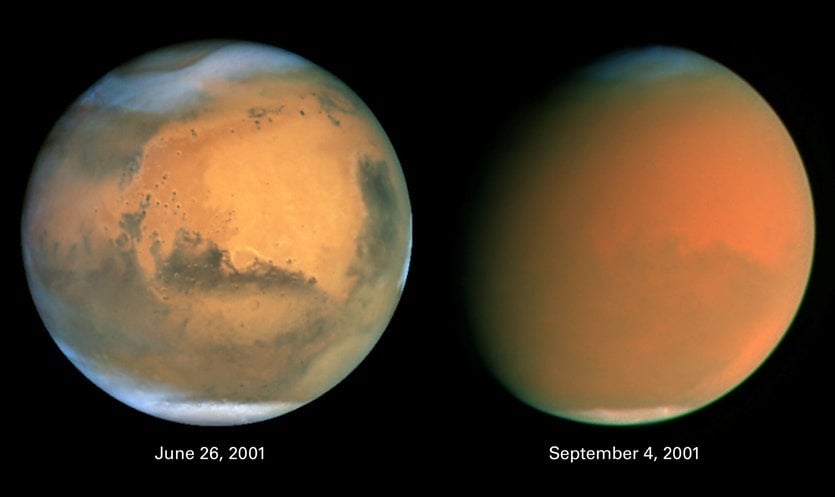Normally the images from NASA's Curiosity rover, currently sitting near “Bloodstone Hill” on Mars, are of alien vistas and rock outcroppings that conspiracy theorists constantly try to anthropomorphize into UFOs. However, the rover is also excellently positioned to capture a unique perspective of an alien sky. And that is exactly what it did recently when it captured an image of both Venus and Earth in the same Martian night sky. The images were actually taken in two separate frames, though the two planets were visible in the sky at the same time.
However, NASA didn't take the images simply because they were interesting. Controllers pointed Curiosity's Mast Camera at the Martian sky in order to get an idea of how dust filled the night sky was. Specifically, how the dust affected the brightness of the twilight 75 minutes after sunset on the 2,784th Martian day of the mission.
Dust is a significant issue on Mars this time of year. The high dust count in the air causes twilights to be brighter than normal, dimming out even moderately bright stars that can be seen other times of the year. Seasonal differences in the dust levels can dramatically impact the colors and visibility of objects in the Martian sky. While it obviously has an impact on the quality of images that Curiosity can take, dust also impacts the rover's overall functionality by coating it's solar panels, limiting its power intake. For now, the dust hasn't seemed to affect the rover's operations, though that might change in the near future.
Monitoring for dust in the atmosphere isn't the only reason Curiosity turns its camera to the heavens. It has captured pictures of Earth and its moon, a blue sunset, and the transit of Mars' moons, Phobos and Deimos, across the sun.
Another famous picture from deep space - the "Pale Blue Dot" image from Voyager (and subsequent book of the same name by Carl Sagan) - helped to popularize a perspective of the Earth as a fragile world in the vastness of space. Curiosity's new image of Earth and Venus makes it clear that Earth isn't the only planetary body that perspective applies to. As Curiosity continues to take new images of Mars and its sky, it will undoubtedly capture further images offering new perspectives of Earth's place in the solar system.
Learn More:
 Universe Today
Universe Today


